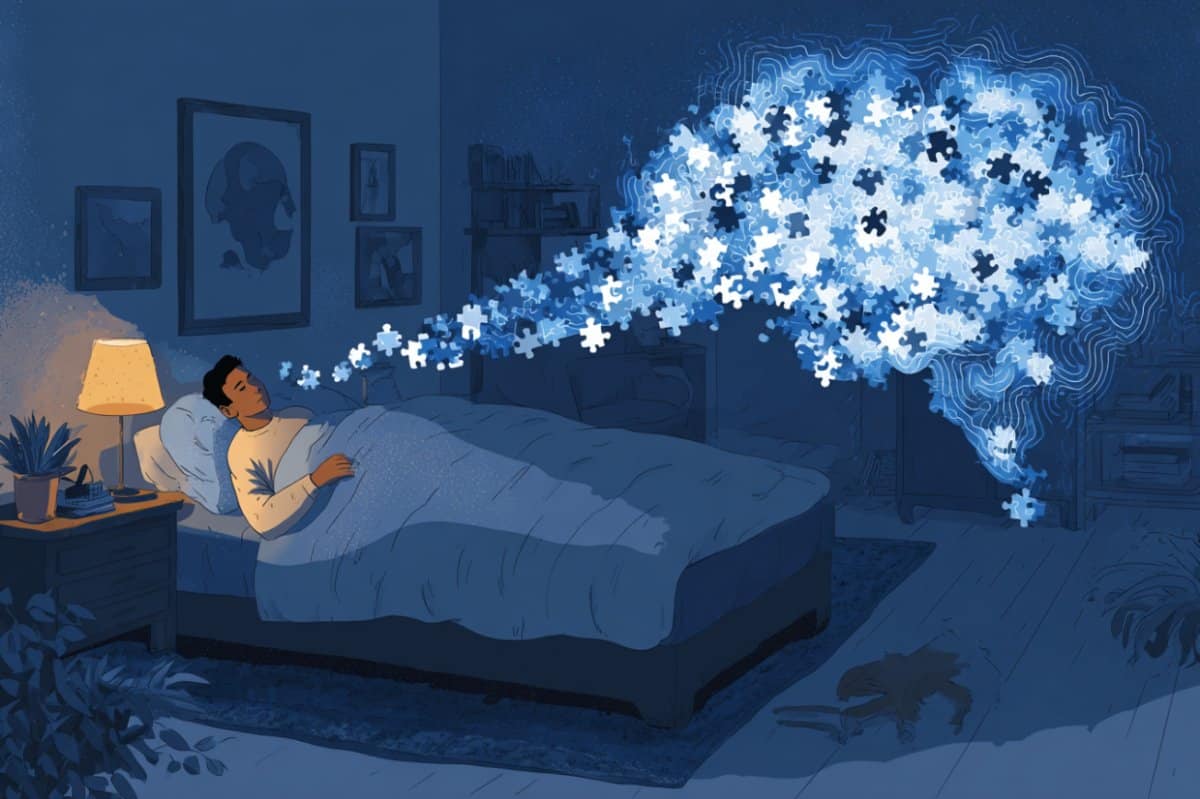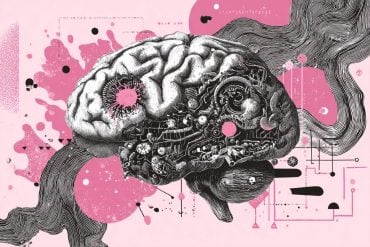Summary: A new study suggests that a short nap, especially one reaching deeper N2 sleep, can significantly boost problem-solving insight. Participants who achieved N2 sleep were far more likely to discover a hidden shortcut in a task after napping.
EEG data showed that a steeper spectral slope during sleep—indicative of deeper rest—was associated with these moments of insight. The findings offer the first neural clues into why brief sleep might help the brain make unseen connections.
Key Facts:
- N2 Sleep Boosts Insight: 85.7% of participants who reached N2 sleep had a breakthrough post-nap.
- Brainwave Clue: A steeper EEG spectral slope during sleep was tied to improved problem-solving.
- Nap vs. Wakefulness: Those who stayed awake were significantly less likely to gain insight (55.5%).
Source: PLOS
“Sleeping on it,” especially dropping deeper than a doze, might help people gain insight into certain kinds of tasks, according to a study published June 26th in the open-access journal PLOS Biology by Anika Löwe, Marit Petzka, Maria Tzegka and Nicolas Schuck from the Universität Hamburg, Germany, and colleagues.
Humans sometimes find that they have a sudden “eureka” moment on a problem they’ve been working on, producing sudden insight or breakthroughs. Scientists have yet to have their own “aha” moment of insight on how it might work, though sleep appears to play a role.
To better understand how sleep might lead to insight while problem-solving, the authors of this pre-registered study asked 90 people to track a series of dots across a screen.
The participants were given instructions about a seemingly simple task that merely involved responding to the dots on a keyboard, but the instructions left out a trick that could make the task easier.
After four sets of trials, the subjects were put down for a 20-minute nap, hooked up to an electroencephalogram (EEG) to track their sleep.
After their nap, the subjects were tested again, and 70.6 percent of participants had their “aha” moment, figuring out the unmentioned trick that made the task easier. All groups improved after their rest period, but 85.7 percent of those who achieved the first deeper sleep phase—called N2 sleep—had their breakthrough.
In contrast, 55.5 percent of those who stayed awake and 63.6 of those who dropped into light, N1 sleep experienced a moment of insight. Studies of the EEG patterns showed that a steeper spectral slope, associated with deeper sleep, was also associated with an “aha” moment.
While the study did not compare people who rested or napped to those who didn’t get a break, a previous study by the authors that used the same task (but did not give participants a chance to nap) found 49.6% experienced “aha” moments. Thus, the authors suggest that a nap with deeper, N2 sleep might help someone who needs a moment of insight.
Coauthor Nicolas Schuck notes, “It’s really intriguing that a short period of sleep can help humans make connections they didn’t see before. The next big question is why this happens. We hope that our discovery that it may be linked to the EEG spectral slope is a good first lead.”
Anika Löwe says, “The EEG spectral slope has only recently been considered as a factor in cognitive processes during sleep. I find the link between the spectral slope steepness during sleep, aha-moments after sleep and the down regulation of weights – which we identified as crucial for aha-moments in our previous computational work – very exciting.”
Löwe adds, “I think a lot of us have made the subjective experience of having important realizations after a short nap. It’s really nice to not only have data on that, but also a first direction of what processes are behind this phenomenon.”
Löwe concludes, “What really struck me when telling people in my environment – particularly creatives – about these findings was how much they resonated with people. Many of them could relate to our results with a personal experience of having a (creative) breakthrough after a nap.”
Funding: ATL is supported by the International Max Planck Research School on Computational Methods in Psychiatry and Ageing Research (IMPRS COMP2PSYCH, www.mps.ucl-centre.mpg.de).
NWS was funded by the Federal Government of Germany and the State of Hamburg as part of the Excellence Initiative, a Starting Grant from the European Union (ERC-StG-REPLAY-852669), and an Independent Max Planck Research Group grant awarded by the Max Planck Society (M.TN.A.BILD0004). We acknowledge financial support from the Open Access Publication Fund of Universität Hamburg.
The funders had no role in study design, data collection and analysis, decision to publish, or preparation of the manuscript.
About this sleep and creativity research news
Author: Claire Turner
Source: PLOS
Contact: Claire Turner – PLOS
Image: The image is credited to Neuroscience News
Original Research: Open access.
“N2 sleep promotes the occurrence of ‘aha’ moments in a perceptual insight task” by Anika Löwe et al. PLOS Biology
Abstract
N2 sleep promotes the occurrence of ‘aha’ moments in a perceptual insight task
Humans sometimes have an insight that leads to a sudden and drastic performance improvement on the task they are working on.
The precise origins of such insights are unknown. Some evidence has shown that sleep facilitates insights, while other work has not found such a relationship.
One recent suggestion that could explain this mixed evidence is that different sleep stages have differential effects on insight. In addition, computational work has suggested that neural variability and regularisation play a role in increasing the likelihood of insight.
To investigate the link between insight and different sleep stages as well as regularisation, we conducted a preregistered study in which N=90 participants performed a perceptual insight task before and after a 20 minute daytime nap.
Sleep EEG data showed that N2 sleep, but not N1 sleep, increases the likelihood of insight after a nap, suggesting a specific role of deeper sleep.
Exploratory analyses of EEG power spectra showed that spectral slopes could predict insight beyond sleep stages, which is broadly in line with theoretical suggestions of a link between insight and regularisation.
In combination, our findings point towards a role of N2 sleep and aperiodic, but not oscillatory, neural activity for insight.








